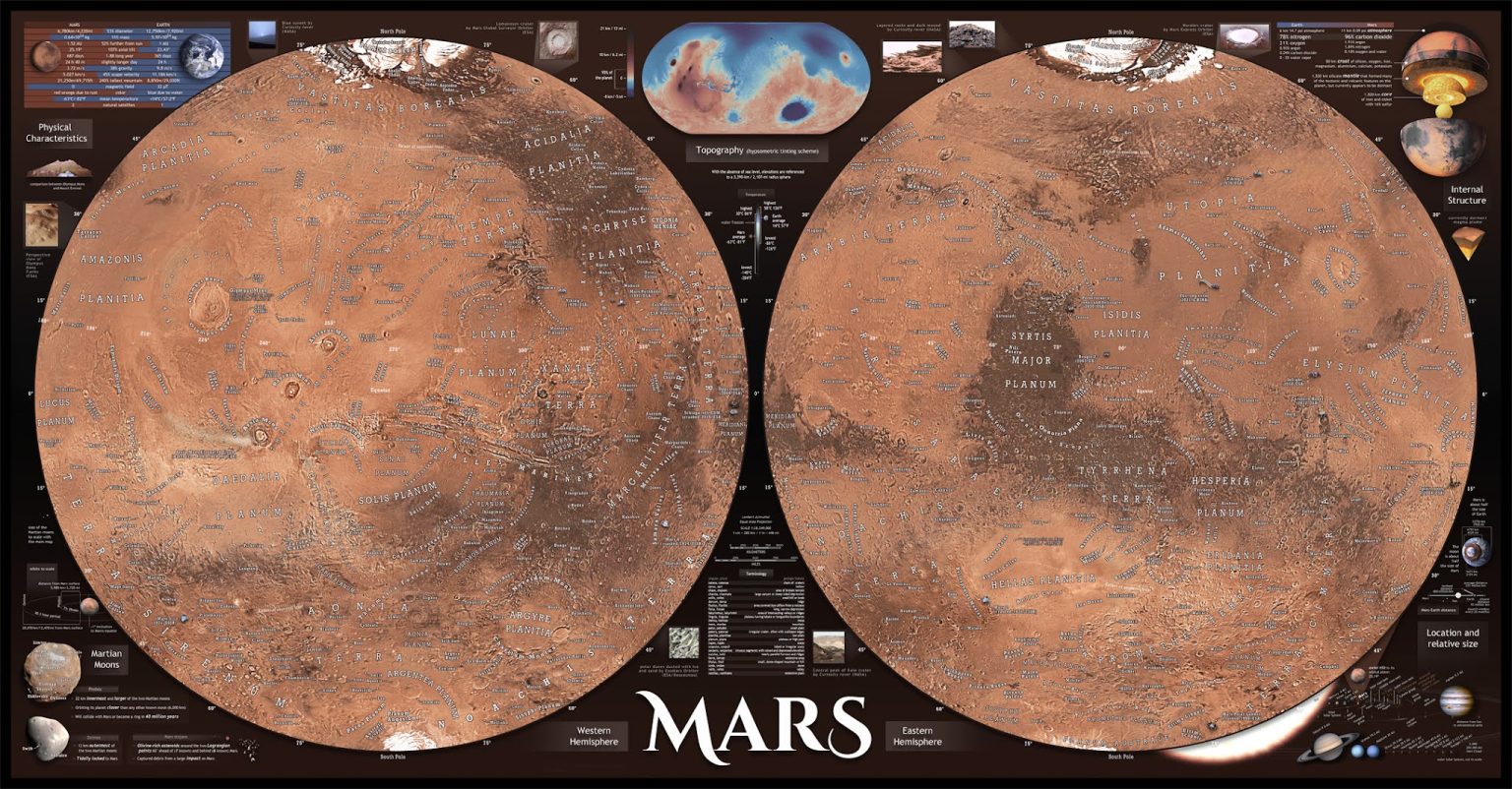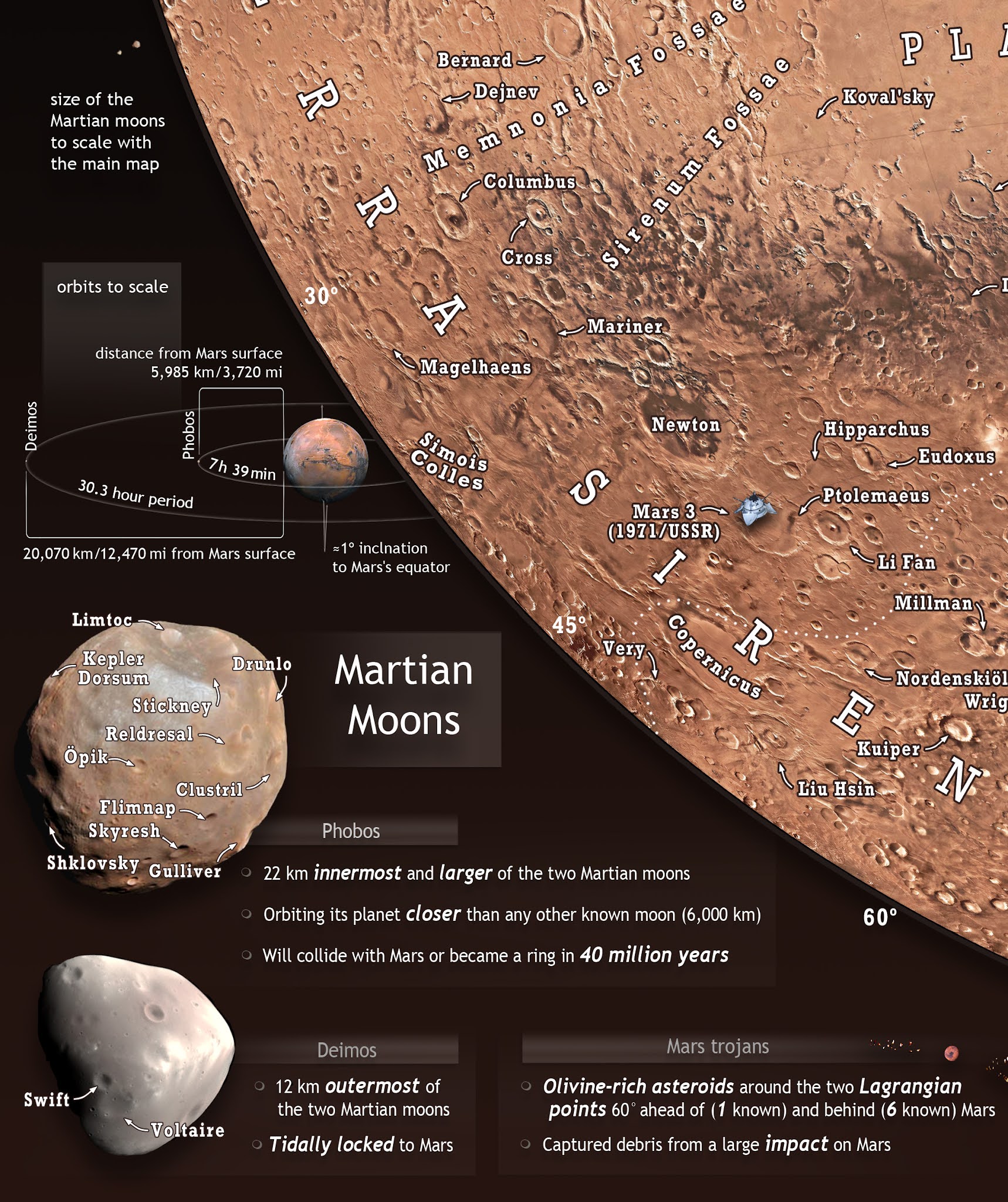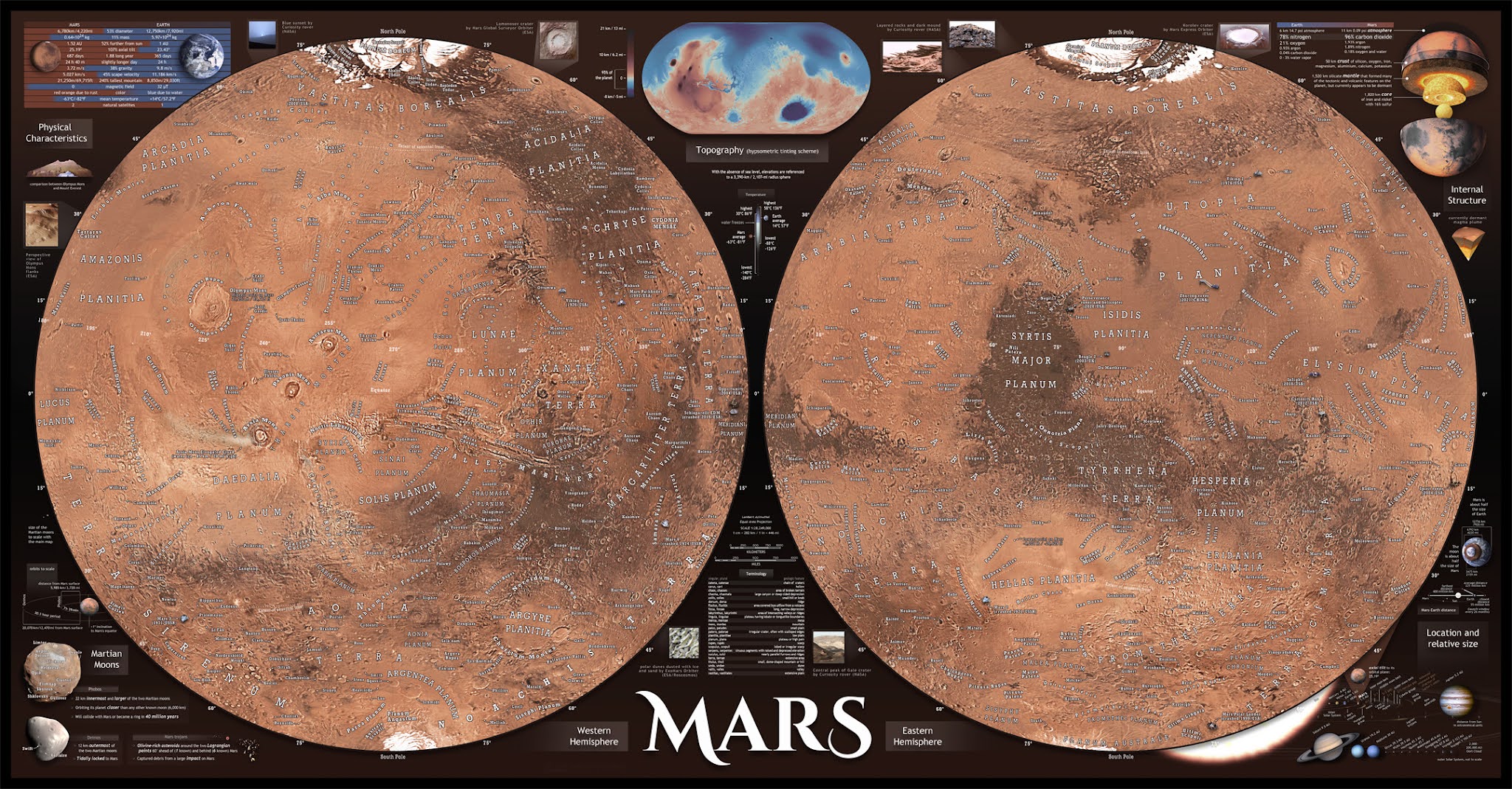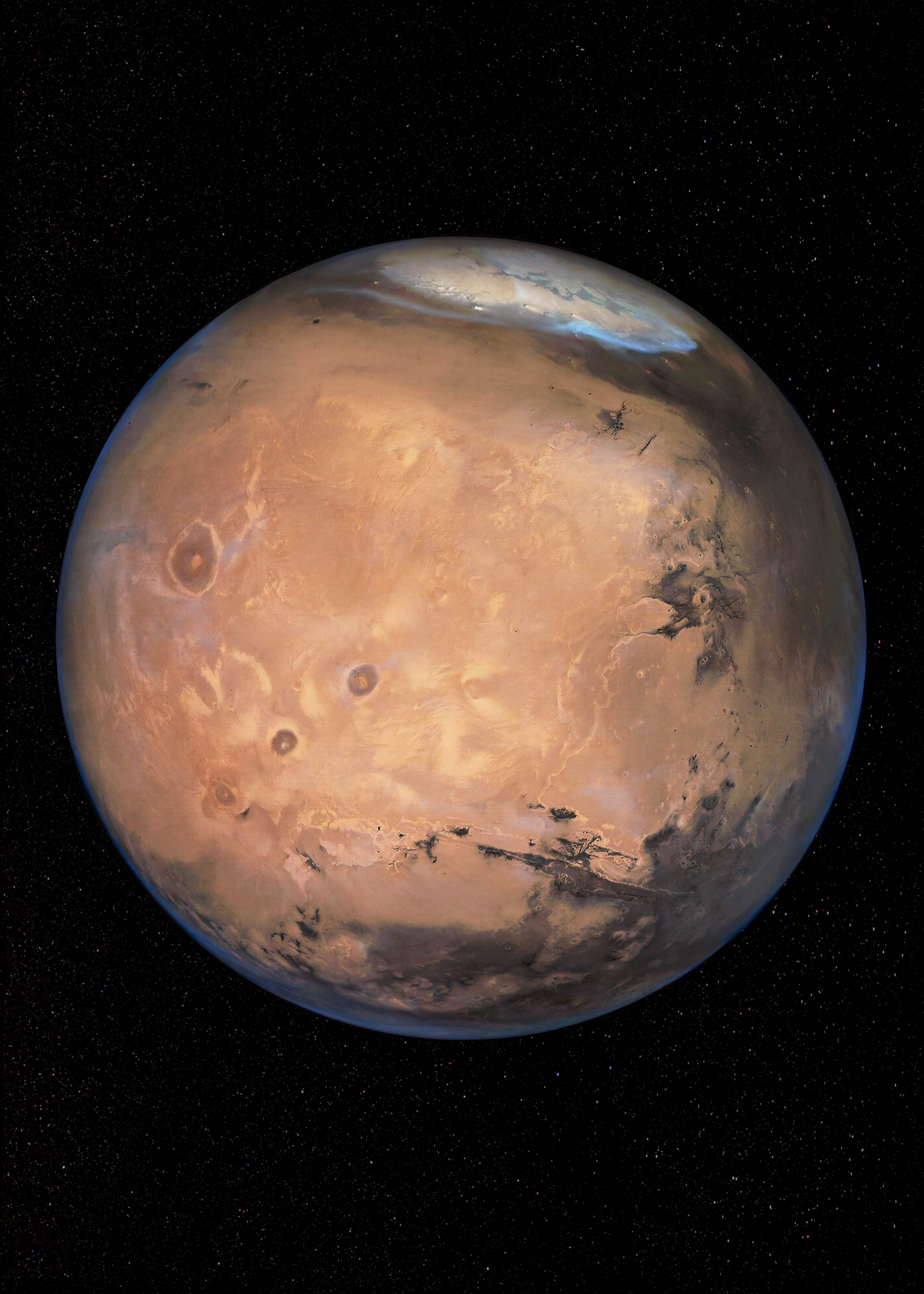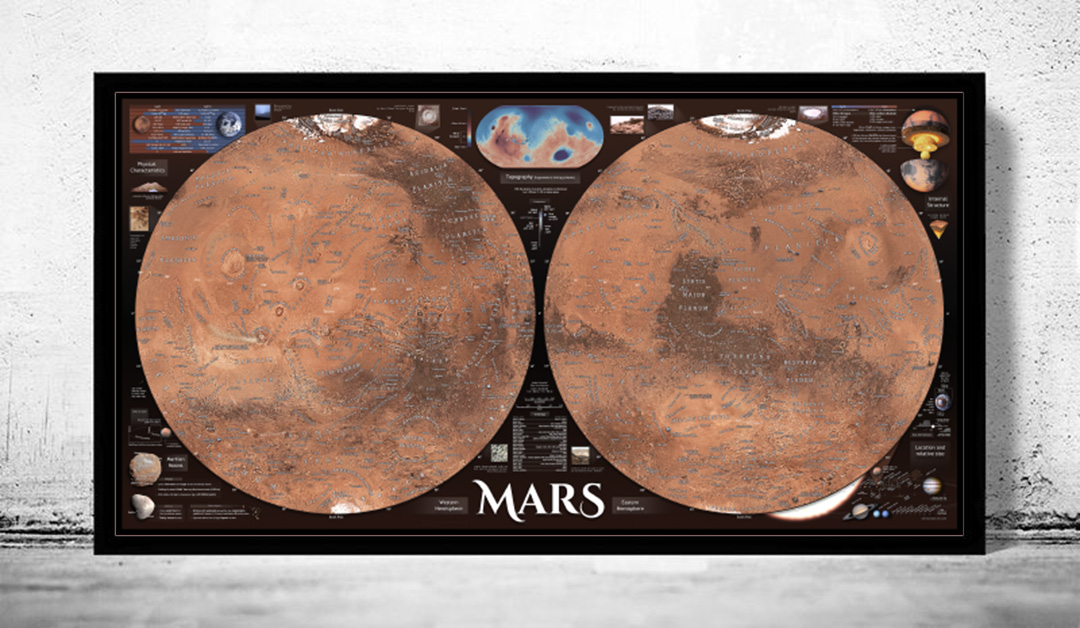Very detailed Map of Mars
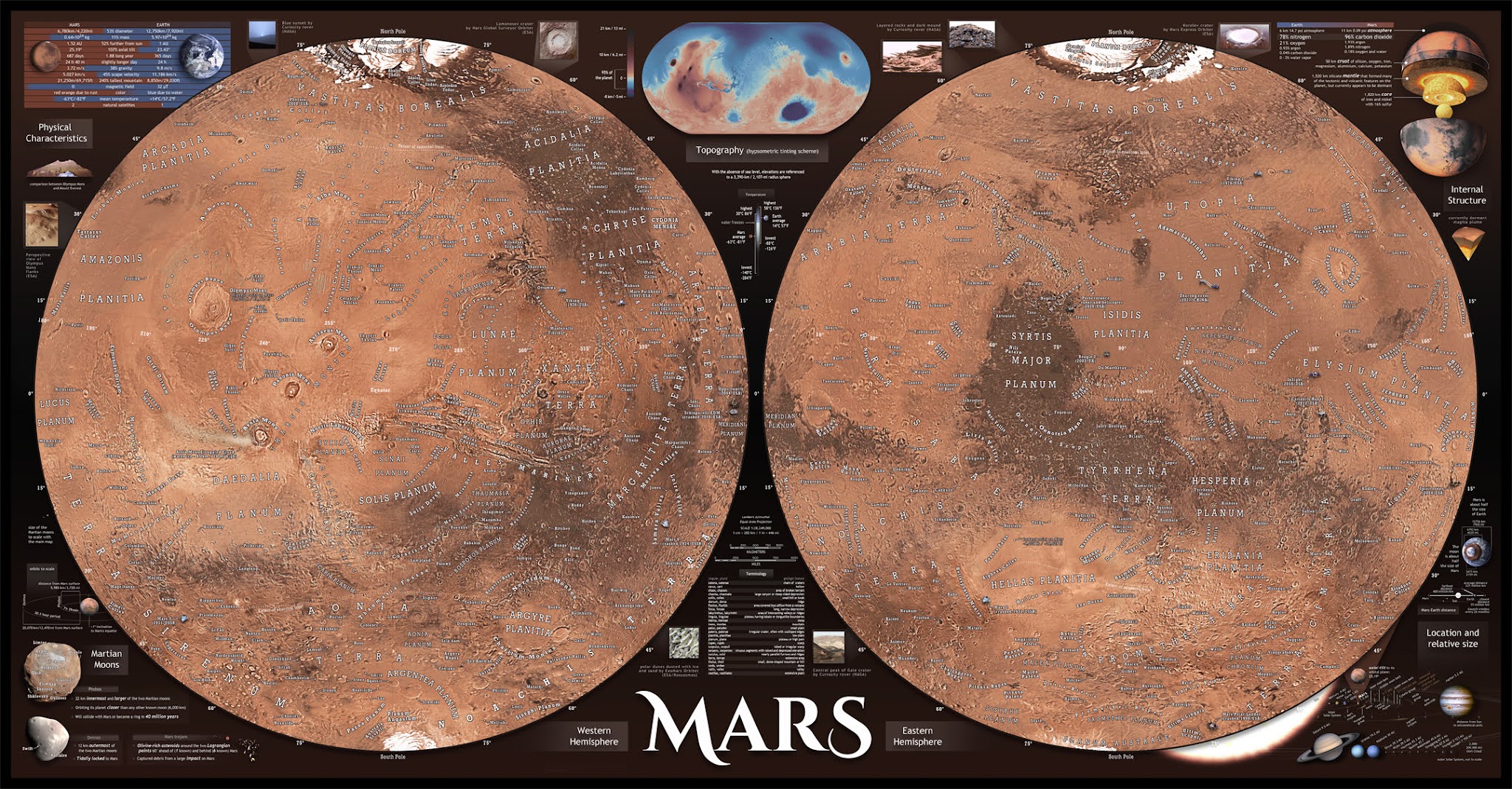
This map of Mars, displayed in Lambert Azimuthal Equal-Area Projection, features annotations of geologic structures including 250 craters.
Infographics around the map provide information on Mars’ physical characteristics compared to Earth, details about its moons, elevation tinting scheme, internal structure, geologic terminology, its location in the Solar System, and size comparisons with Earth and the Moon.
Developed by Pablo Budassi in 2024, this map contains detailed annotations, including 16 human exploration mission landing sites and future mission sites.
In the coming years of the new space age, as we become a multiplanetary species, the “Red Pearl” will be more present than ever in our lives and we should become familiar with it. This detailed map of fine design in a study or living room would be a good starting point!
The map is based on the colorized mosaic by NASA AMES, which integrates the Viking colorized mosaic with the latest Mars Digital Image Model (MDIM 2.1). The projection was processed using G.Projector software from NASA Goddard Institute for Space Studies, which utilizes several open-source Java libraries.
The names of features were sourced from the International Astronomical Union (IAU) Working Group for Planetary System Nomenclature (WGPSN).

* Terraformed Mars *


